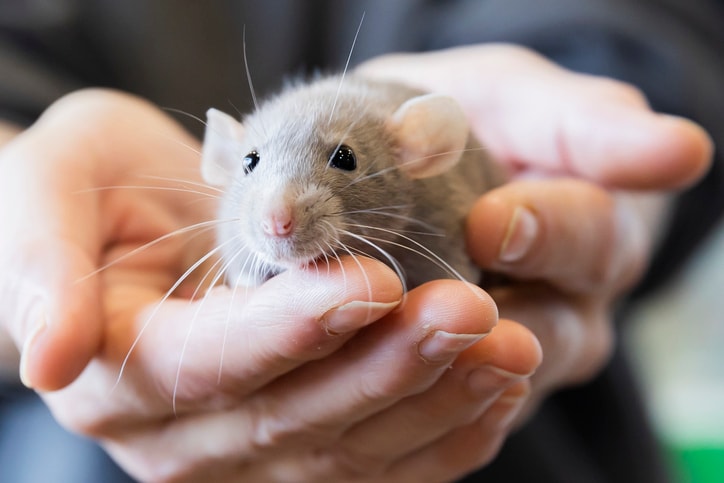Key points
- Rat-bite fever (RBF) is an infectious disease people can get from contact with rodents.
- Anyone can get RBF, but having pet rodents or working with rodents may increase your risk.
- If not treated quickly, the disease can lead to severe illness and possibly death.
- If you think you might have RBF, see a healthcare provider immediately.

Overview
Anyone can get RBF if they have contact with rodents infected with the bacteria that cause RBF. Certain groups of people are more at risk for this serious and sometimes deadly disease.
the rodents that carry RBF are rats, mice, gerbils, guinea pigs, and squirrels. The bacteria that cause RBF is part of the natural germs in these rodents' bodies. It's not possible to tell if a rodent carries the bacteria just by looking at it. So, if you know you were bitten or scratched by a rodent, you should monitor your health for RBF symptoms.
You should see a healthcare provider right away if your symptoms get worse. The infection is resistant to many commonly used antibiotics. Getting treatment with the right antibiotics is important to keep the disease from progressing.
Thankfully, RBF is rare in the United States. But you should know Many of these rodents that can carry it are popular pets, which can put people at risk. People who work in pet stores or labs with rodents also could be at higher risk.
Symptoms
The early symptoms of RBF can be like the flu. If you get infected in North America, these include fever, vomiting, headache, and muscle pain. About half of people have joint pain or swelling as well. And 3 in 4 have a rash.
Symptoms usually begin 3 to 10 days after your contact with rodents. They can appear up to 21 days after the contact. By that time, the bite or scratch should be healed. This might make it hard to remember you were bitten.
Within 2 to 4 days after the fever begins, a rash may appear on the hands and feet. This rash looks like flat, reddened areas with small bumps. One or more joints may then become swollen, red, or painful.
If you had contact with rodents in Asia, the symptoms might be different. They can include fever, swelling around the bite if you have one, rash, and swollen lymph nodes. As with the type of RBF found in North America, getting early treatment is important to protecting your health.
Complications
Complications of RBF can include pockets of infected fluid in the body, like in your belly. The disease can also cause infections of many major organs, including the liver, kidneys, lungs, heart, brain, and nervous system.
Infection in the organs is extreme and very rare. There is not specific treatment for organ infection, but if it occurs, a healthcare provider would begin the general treatment options for RBF.
How it spreads
RBF can spread to people through scratches, bites, or contact with a rodent's saliva or pee.
If you have pet rodents or handle rodents as feed for snakes/reptiles, you can be at increased risk for RBF. Other at risk include people who work at pet stores or laboratories where they may have contact with rodents.
People usually start to show signs they are sick 3-10 days after exposure. The virus cannot be spread between people.
The virus cannot be spread from person to person.
Treatment and recovery
If you develop signs or symptoms of RBF, immediately contact a healthcare provider. Make sure to tell your provider about your contact with rodents.
Antibiotics can cure the disease if treatment is started soon after you become sick. It is important that you follow your healthcare provider's instructions. Take all of the medicine prescribed to you, even if you start to feel better.
These courses of treatment are very effective but if for some reason your symptoms worsen, see your health care provider immediately.
